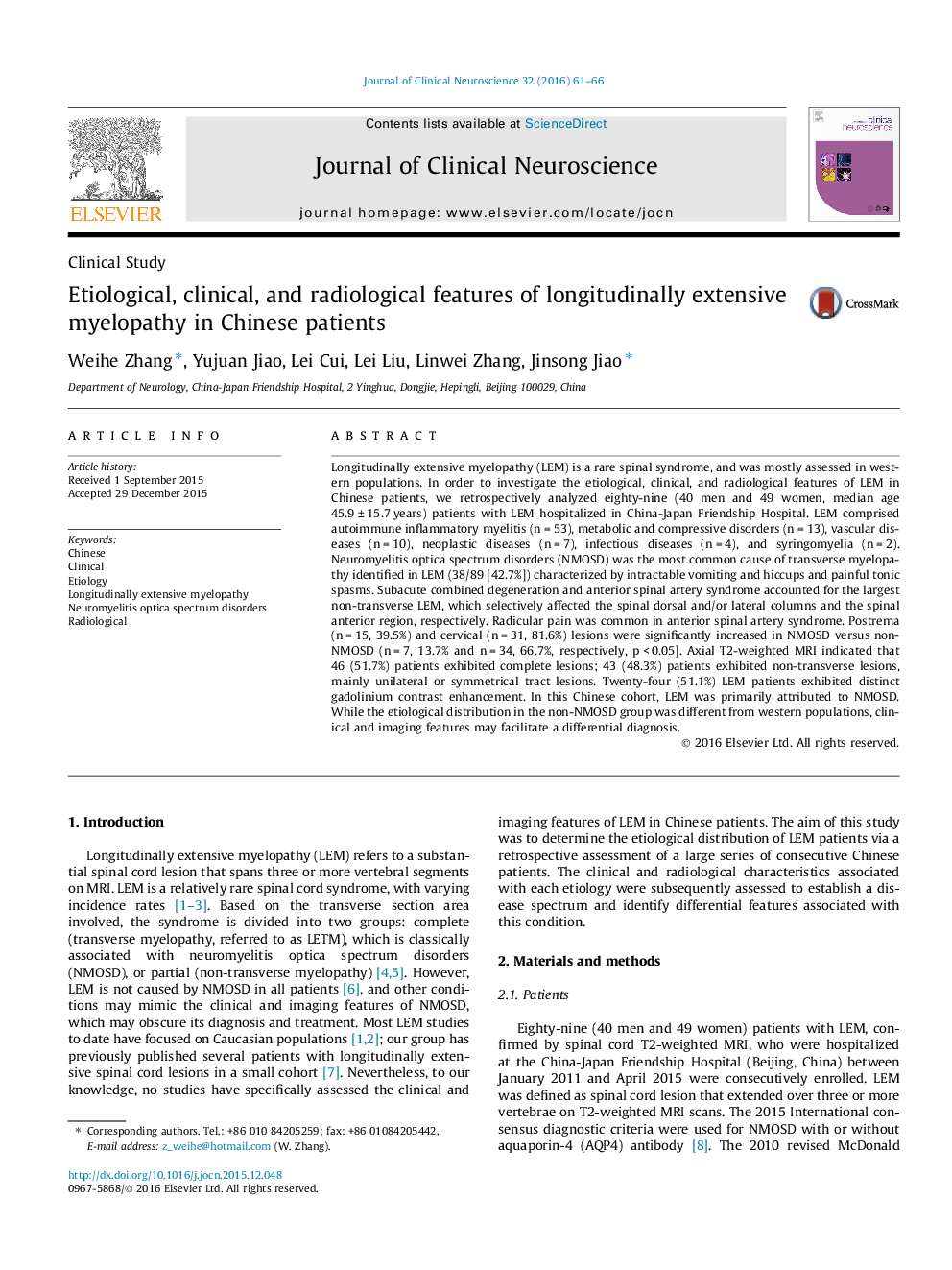| کد مقاله | کد نشریه | سال انتشار | مقاله انگلیسی | نسخه تمام متن |
|---|---|---|---|---|
| 3058044 | 1580284 | 2016 | 6 صفحه PDF | دانلود رایگان |
• Longitudinally extensive myelopathy is often associated with neuromyelitis optica spectrum disorders in Chinese patients.
• Over half of the longitudinally extensive myelopathy cases are attributed to other important causes.
• The etiological distribution in Chinese patients is different to western populations.
• Clinical and imaging features may facilitate a differential diagnosis.
Longitudinally extensive myelopathy (LEM) is a rare spinal syndrome, and was mostly assessed in western populations. In order to investigate the etiological, clinical, and radiological features of LEM in Chinese patients, we retrospectively analyzed eighty-nine (40 men and 49 women, median age 45.9 ± 15.7 years) patients with LEM hospitalized in China-Japan Friendship Hospital. LEM comprised autoimmune inflammatory myelitis (n = 53), metabolic and compressive disorders (n = 13), vascular diseases (n = 10), neoplastic diseases (n = 7), infectious diseases (n = 4), and syringomyelia (n = 2). Neuromyelitis optica spectrum disorders (NMOSD) was the most common cause of transverse myelopathy identified in LEM (38/89 [42.7%]) characterized by intractable vomiting and hiccups and painful tonic spasms. Subacute combined degeneration and anterior spinal artery syndrome accounted for the largest non-transverse LEM, which selectively affected the spinal dorsal and/or lateral columns and the spinal anterior region, respectively. Radicular pain was common in anterior spinal artery syndrome. Postrema (n = 15, 39.5%) and cervical (n = 31, 81.6%) lesions were significantly increased in NMOSD versus non-NMOSD (n = 7, 13.7% and n = 34, 66.7%, respectively, p < 0.05]. Axial T2-weighted MRI indicated that 46 (51.7%) patients exhibited complete lesions; 43 (48.3%) patients exhibited non-transverse lesions, mainly unilateral or symmetrical tract lesions. Twenty-four (51.1%) LEM patients exhibited distinct gadolinium contrast enhancement. In this Chinese cohort, LEM was primarily attributed to NMOSD. While the etiological distribution in the non-NMOSD group was different from western populations, clinical and imaging features may facilitate a differential diagnosis.
Journal: Journal of Clinical Neuroscience - Volume 32, October 2016, Pages 61–66
